How safe are American pick-ups and large utes that are popular among Australian buyers but can pose a threat to other road users? ANCAP has tested the crash avoidance tech of 5 top utes to find out.
Victorian rules for using fog lights, headlights and driving lights
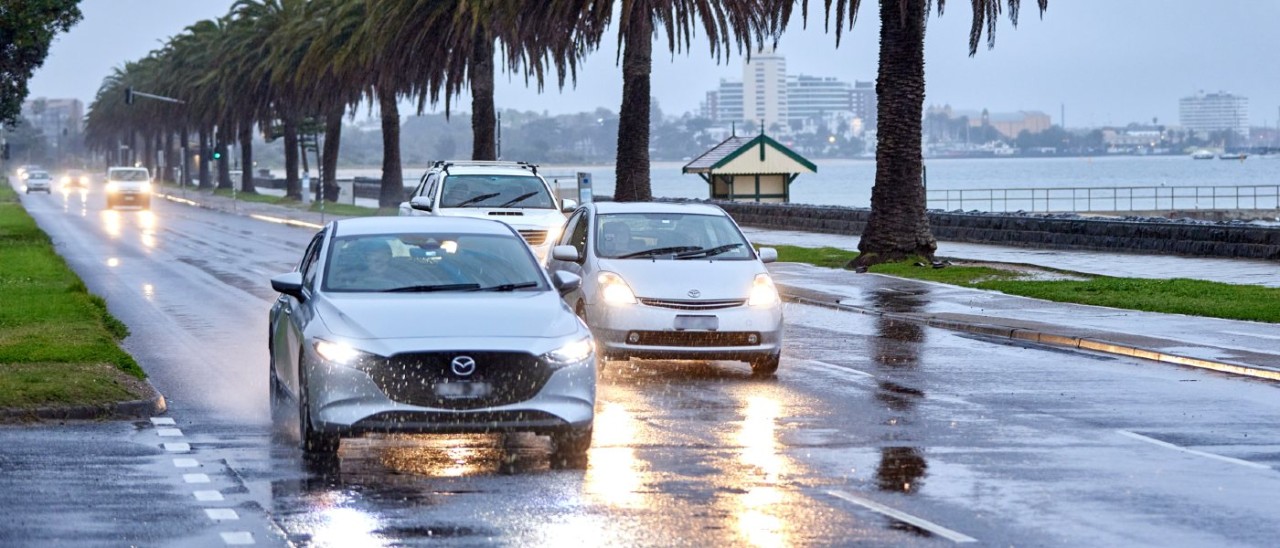
The lights on your car are an effective safety tool. In this guide, we explain the different types of lights and the road rules that relate to using them.
As vehicle manufacturers develop increasingly advanced safety features, the importance of the humble headlight can be forgotten. In reality, your car’s lights – which encompasses more than just your ‘headlights’ - not only allow you to drive at night, but also make you visible to, and able to communicate with, other motorists.
“Understanding your car’s lighting system is just as important as knowing how to steer or brake,” says RACV Driver Education and Development Manager Silvia Morris. “Whether it’s cloudy, foggy, or raining, using the right lights at the right time helps everyone on the road stay safe."
Because of their importance, there are specific rules about when and how you can use your lights. Do you know the difference between high beams and fog lights? Or whether it’s legal to flash your lights at someone?
Read on to learn about the different types of lights in vehicles, when to use them, and get the answers to some of the most common questions.
Guides to help you stay safe behind the wheel
- How to improve night vision for safer driving
- Safe driving tips for senior and older drivers
- Driving safely in fog, rain, snow, and poor-visibility conditions
- Safety tips for driving in the snow and on icy roads
- Road safety around schools – what everyone needs to know
In this article
Your car’s different types of lights and how to use them
Low beams
Your car’s low beams are the primary set of lights used when driving. Australian motorists often just refer to their low beams as their headlights, though your headlights technically consist of both your low and high beam light functions.
Your low beams illuminate the road ahead of you and are the standard set of lights used for nighttime driving, as well as during reduced visibility conditions such as rain.
“In bad weather, like when windscreens and mirrors are covered in rain or there's fog, it’s surprisingly easy for other drivers to miss seeing your vehicle,” says Morris. “Turning your headlights on helps cut through that reduced visibility and gives others more time to notice you and react safely.”
You can also use your low beams for daytime driving as this can improve your car’s visibility.
When can I flash my lights?
You may only flash your headlights (switch them from low to high beam and back) briefly as a means to tell a vehicle in front of you that you are about to overtake them.
You cannot flash your lights to warn other motorists about a mobile speed camera.
What are daytime running lights?
Daytime running lights (DRLs) are different to standard low beams. DRLs automatically turn on with your vehicle and exist to make your car more visible on the road. They are permitted but not mandated in Australia, unlike in EU countries, Canada and Japan where they are a requirement. If your car does not have DRLs, turning your low beams on for daytime driving is a good alternative.
“Having your headlights on even during the day can help other road users see you approaching sooner, and your lights reflecting off parked cars, road signs and other surfaces increases your visibility in ways you might not even realise,” says Morris.
Importantly, DRLs do not replace the use of low beams at night (or in the rain) and you must have working, operational low beam lights when driving at nighttime.
What are automatic car headlights?
Many modern vehicles come equipped with low beams that turn on automatically. They do this by using light sensors that can detect when the vehicle has entered a low-light environment (including dusk, tunnels, heavy cloud cover etc).
However, these lights may not turn on in other reduced visibility conditions like rain, as the sensors detect light not moisture. If you’re not certain if your vehicle has additional rain sensors to trigger the lights, it’s best to manually turn on your low beams when driving through rain.
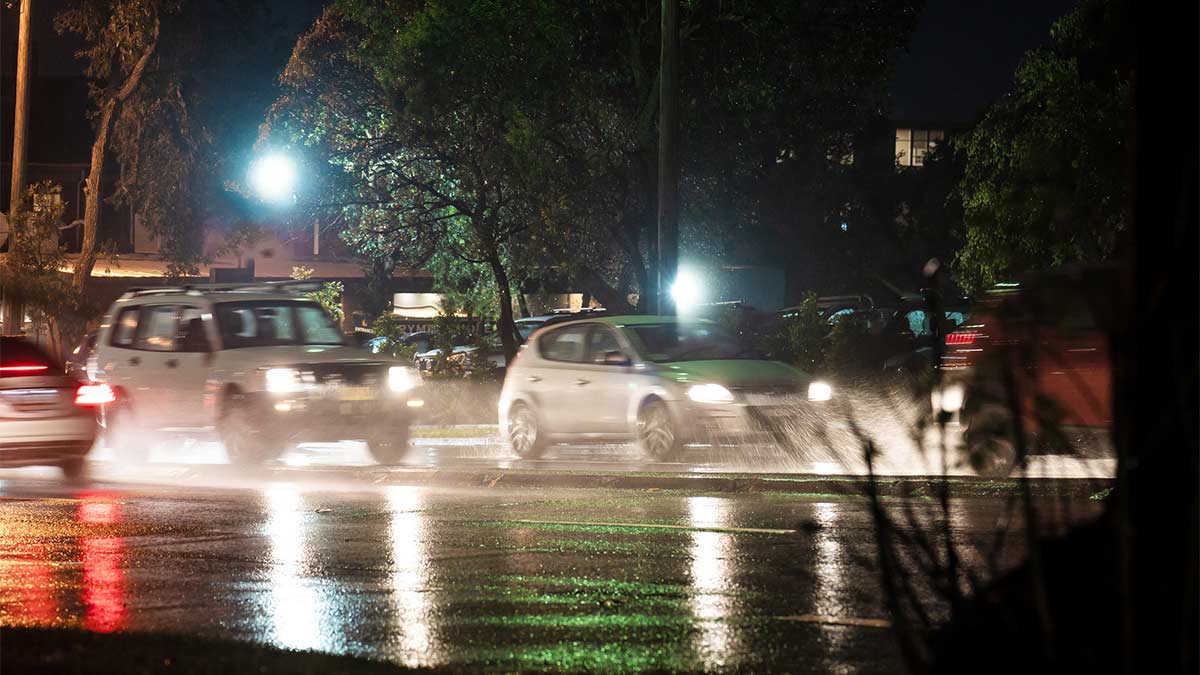
Low beams must be used when driving at night, as well as during weather conditions like rain. Image: Getty.
High beams
Your high beams are brighter and illuminate further than your low beams. They typically illuminate about 50 metres ahead of your vehicle, compared to around 25 metres for low beams.
High beams should only be used on dark roads with no or few other drivers. You must dim your high beams within 200 metres of other vehicles (both oncoming and travelling in the same direction) as these lights can dazzle drivers.
To avoid being dazzled by high beams that haven’t been dimmed:
- For oncoming vehicles, do not look directly ahead but instead use the lane markings on the left side of the road to guide you until the vehicle has passed.
- For vehicles behind you, adjust your rear vision mirror to reduce glare.
If you find yourself dazzled by another vehicle’s high beams, pull over if safe to do so until your vision is restored.
Are high beams the same as fog lights?
No, high beams are not the same as fog lights. High beams point directly in front of your vehicle while fog lights point towards the ground. Do not use your high beams in fog as they can actually make it harder to see.
Fog lights
Fog lights are for use in fog or other hazardous weather conditions that reduce visibility. This can include heavy rain as well as snow or even smoke.
They can be fitted at the front, or both the front and rear of a vehicle, with the rear fog lights serving to make your car more visible to other drivers. Fog lights work by casting a low, wide beam of light that helps you see road markings. They do not help you “see through” the fog, so make sure you take additional precautions such as increasing your following distance and reducing your speed.
During the day, you must use either your fog lights or your low beams when driving in foggy or other reduced visibility conditions. It is illegal to use your fog lights outside of these reduced visibility conditions.
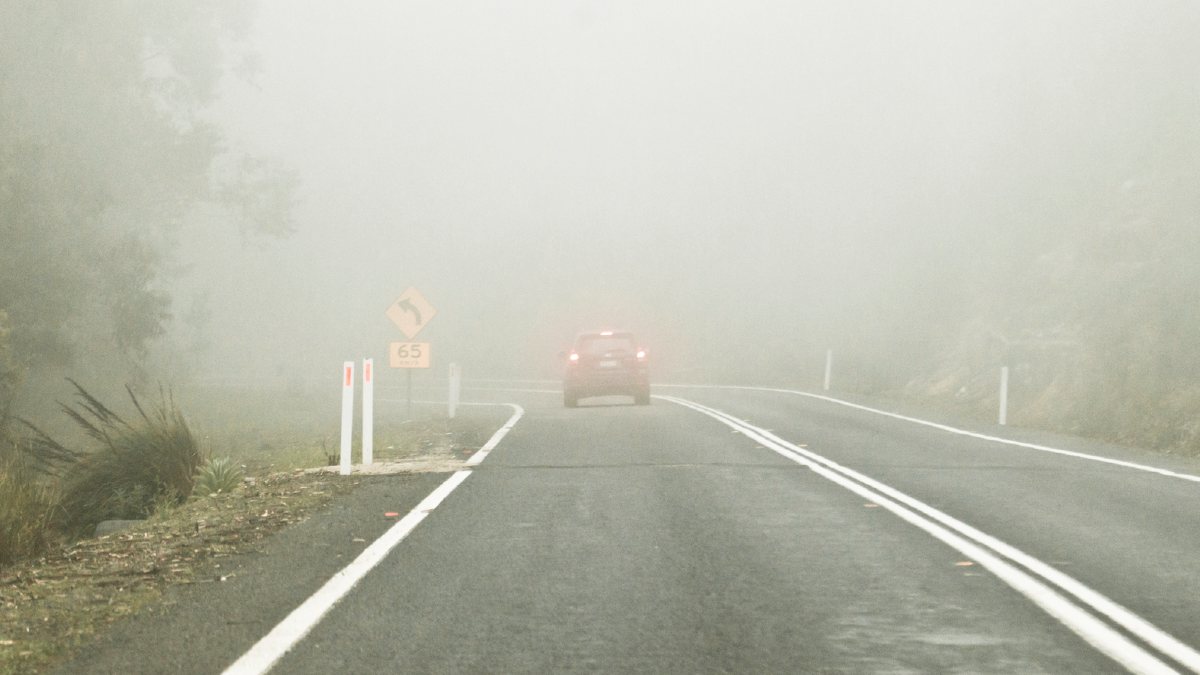
Car lights improve visibility for both you and other drivers. Image: Getty.
Driving lights
Driving lights are an aftermarket car accessory that provide even more illumination than standard high beams. For this reason, they should only be considered by motorists who regularly drive on remote, poorly lit roads where they are unlikely to encounter other drivers.
These lights must legally be wired so that they turn on and off with your factory-installed high beams. Switch your lights to low beam until any oncoming vehicles have passed.
Additional criteria for the acceptable installment of driving lights applies – more information can be found in the Victorian Vehicle Standards Information: Guide to modification for motor vehicles.
Indicator lights
Car indicator lights are used for communicating with other road users (motorists, pedestrians, bike riders and more). They tell others on the road of your intention to turn or otherwise move your vehicle in the indicated direction.
Indicator lights should be used:
- At intersections
- At roundabouts (when entering and, if practicable, when exiting too)
- When changing lanes
- When overtaking
- When merging
- When parking.
The coloured coating on your indicators can fade or crack over time, which can render them ineffective. If you're unsure of the quality of your indicator lights, ask your mechanic to check and replace them if required at your next car service.
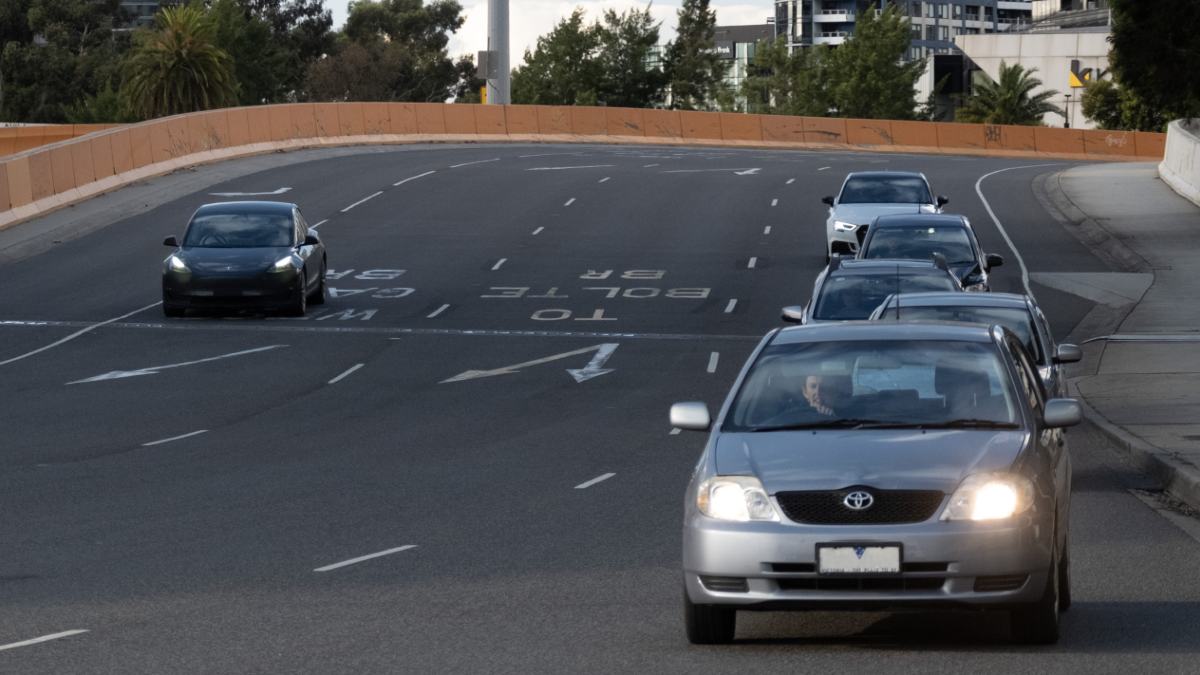
If your vehicle doesn't have daytime running lights (DRLs), you can use your low beans to make your car more visible during the day. Image: Shannon Morris.
Hazard lights
Your hazard lights are activated by a relatively large or otherwise highly visible button in your cabin marked by a red triangle symbol. Pressing the hazard light button causes all of your indicator lights to flash simultaneously.
Hazard lights tell other drivers that there is a hazard they should watch out for. Drivers should only use these lights when:
- You’re stopped or moving slowing in a way that is likely to obstruct traffic or pedestrians (e.g. such as after a minor collision)
- You’ve stopped in an emergency lane
- You’re operating the hazards as part of an anti-theft or alcohol interlock device
Hazard lights should also be used by bus drivers who are stopping to pick up or drop off children, as well as by drivers marketing a product that is likely to appeal to children (for example, an ice-cream van).
Tail lights and brake lights
Situated at the back of the car, tail lights and brake lights are important for making you and your actions visible to drivers behind you.
Tail lights automatically turn on with your low beam headlights, while brake lights activate whenever the brake is applied. If your tail lights are broken you cannot legally drive at night until they are fixed, even if your low beams are fine.
It is illegal and unsafe to drive with broken brake lights.
More: What to do if your brakes fail in an automatic or manual car
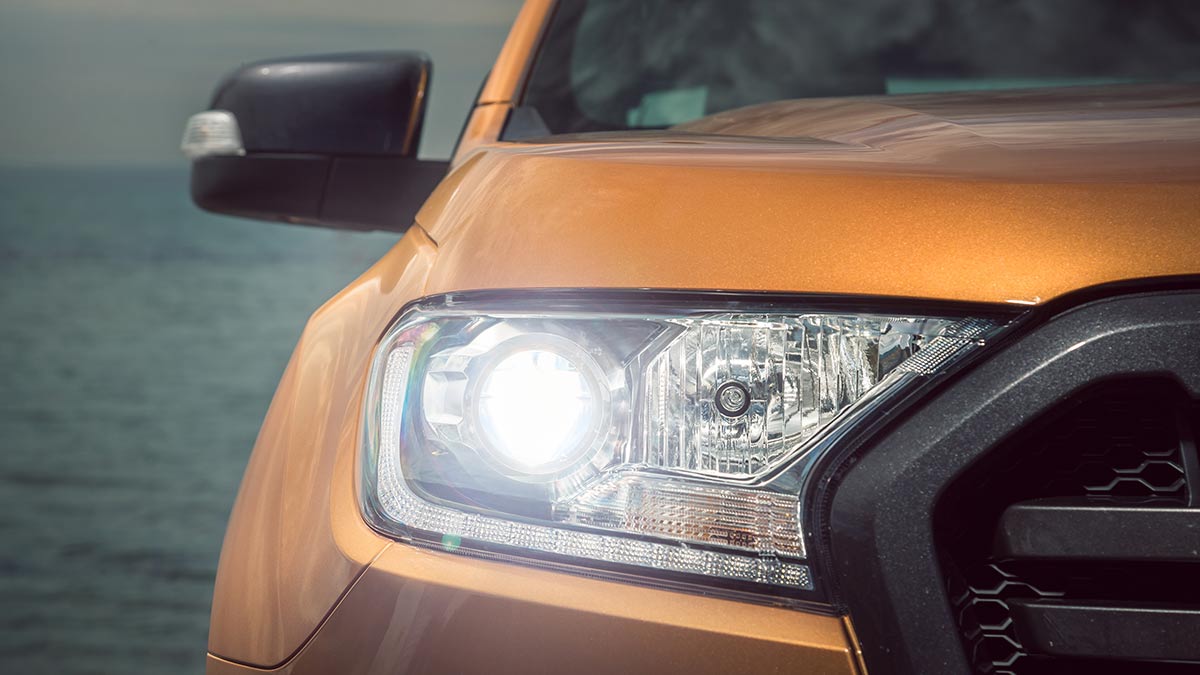
Car lights can yellow over time but cleaning them is typically an easy DIY process. Image: Getty.
What do I do if my car lights break?
It is illegal to drive at night or in hazardous weather conditions without working headlights, tail lights and number plate lights. Additionally, it is illegal to drive at any time if your car does not have working brake lights or indicator lights.
There are many reasons that your car lights may not be working, including a blown bulb, broken lens or faulty wiring. The problem is best determined and fixed by an expert technician.
How do I know if my car’s headlights need to be realigned?
Your vehicle's headlights are aligned to provide sufficient visibility while driving while also not blinding other drivers. However, over time the vibrations and movement of driving may shift your headlights out of their optimal alignment.
Signs your headlights may need to be realigned include:
- One headlight appearing brighter than the other
- Your headlights are on but the road seems dim
- Other drivers regularly flashing their lights at you at night.
Most mechanics can easily realign your car’s headlights.
Do I need to clean my headlights?
The plastic casing on your car’s headlights can become yellow and cloudy from prolonged exposure to sunlight, reducing the lights’ efficacy. If your headlights seem dim at night, dirty headlights could be the reason.
You can clean this yellowing off the headlights by using a commercial headlight cleaning product. Alternatively, toothpaste or a combination of vinegar and baking soda can be used. Apply tape around the headlight before cleaning to help preserve the car’s paintwork.
The information provided is general advice only. Before making any decisions please consider your own circumstances and the Product Disclosure Statement and Target Market Determinations. For copies, visit racv.com.au. As distributor, RACV Insurance Services Pty Ltd AFS Licence No. 230039 receives commission for each policy sold or renewed. Product issued by Insurance Manufacturers of Australia Pty Ltd ABN 93 004 208 084 AFS Licence No. 227678.


